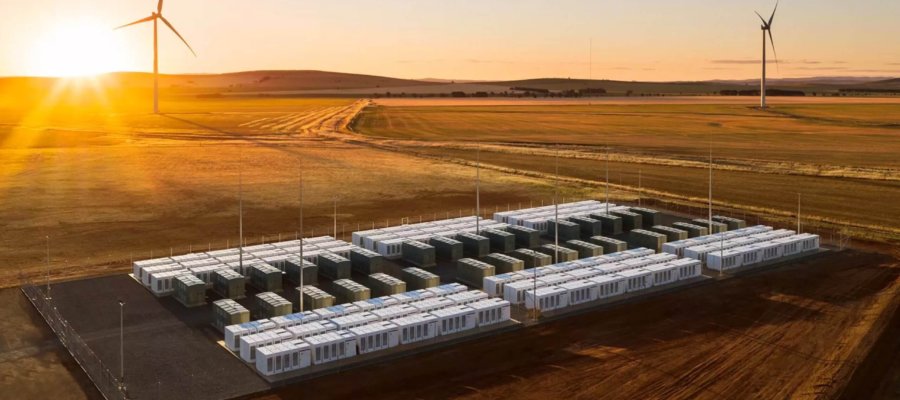Cyprus, like many islands, currently depends on dirty imported fossil fuels for electricity production. Due to slow technological uptake, Cypriot consumers are paying a financial and physical price to pollute.
For the first half of 2019, household electricity prices in Cyprus were the 7th highest in the EU. During this period, households paid €0.2203 per kWh. One reason for this is that Cyprus pays millions in Euro in carbon emissions fines to the EU. In fact, in 2018, the Electricity Authority of Cyprus (EAC) paid €38.5 million in greenhouse gas rights. This is a 214.4% increase from 2017 when they paid €12.3 million. These financial costs are passed down to Cypriot consumers.
Burning fossil fuels is not only more expensive, it is also ruining our planet. But, the outdated practice of burning fossil fuels to generate electricity isn’t the only way to produce power. Electrical utilities and governments around the world are building 21st-century grids connected to decentralised sustainable energy sources. They exemplify another way that is both technologically possible and ecologically necessary.
COP21 Paris Climate Agreement
Before we explore success stories and sustainable energy trends, let’s take a look at Cyprus and the policies and practices of the EAC.
As the 109th signatory to the Paris Agreement, Cyprus joined with other nations to combat climate change. The main aim was to increase ambitions to keep global temperature rise below 2 degrees Celsius above pre-industrial levels. To avoid even more climate catastrophes, the world must limit this temperature increase even further, to 1.5 degrees Celsius.

Image: World Economic Forum
The Cypriot government must enact more ambitious plans that ensure the island meets targets set in Paris. As a signatory, they must see it as their duty to slow the worst effects of climate change. We, the people, have the power to renew efforts to build a more sustainable society. Cyprus can become a model of a truly sustainable energy island. Doing so ensures a liveable future and creates thousands of jobs in a growing renewable energy sector.
Reaching a Tipping Point
Renewable energy is reaching a tipping point. Wind farms and solar photovoltaic (PV) arrays combined with energy storage are more economical to build and operate than natural gas infrastructure.
Abundant resources on the island have the potential to provide sustainable energy to all electricity consumers. In fact, consumers can also be producers of clean energy. To ensure a path to a sustainable future, we will need to apply political pressure on the government to do the right thing. In this case, doing the right thing also happens to make the most financial sense.
Electricity Authority of Cyprus
Unfortunately, the Cypriot Government has failed to see the abundant potential of solar & wind power generation. A quick glance at the EAC web page on Generation reveals their myopic policies.
Since Cyprus has no primary sources of energy, the Electricity Authority of Cyprus (EAC) depends entirely on imported fuel, mainly heavy fuel oil, for electricity generation.
EAC on Power Generation

Image: Financial Mirror
Let’s interrogate this statement that “Cyprus has no primary sources of energy.”
First of all, what are primary sources of energy?
Primary Energy
Primary energy consists of unconverted fuels – both fossil fuels and green energy sources. Fossil fuels are crude oil, hard coal and liquid natural gas (LNG). Cleaner green energy sources are geothermal, waves, wind and solar radiation.
When EAC claims that Cyprus does not have any primary energy sources, they’re ill-informed. They’re also lying to the general public since this statement is absolutely false. Of course Cyprus has primary sources of energy. And, we’re not talking about the natural gas deposits discovered deep below the Eastern Mediterranean Sea.
The Sun is the primary source of energy on Earth. Solar energy is the most abundant source of energy.
Solar radiation can be harnessed directly by solar photovoltaic (PV) modules and converted into electricity. No need for drills, pipes, refineries and power stations to burn fossil fuels. No emissions result from directly generating solar electricity harnessed from the sun.
If you’re looking for Cyprus’ natural resources, no need to dive deep; look up! It’s solar energy.
Former EU Energy Commissioner Maroš Šefčovič on a visit to Cyprus
Renewable Energy Potential in Cyprus
In contrast to the rest of Europe, total greenhouse gas emissions in Cyprus are increasing compared to 1990 levels.
It does not help that, as of 2018, less than 14% of Cyprus’ energy was generated from renewable sources. However dismal this statistic may seem, the future adoption of renewable energy looks bright.
The International Renewable Energy Agency (IRENA) conducted a techno-economic analysis for Cyprus. They project that the island can increase its renewable energy portfolio anywhere from 26% to 40% of annual energy generation. By 2030, IRENA projects anywhere from 500 – 1000 MW of solar photovoltaic and 175 – 375 MW of wind energy production. IRENA forecasts that this drive for PV and wind developments will lead to 22,000 new jobs.

Graphic: IRENA
IRENA worked with Cyprus to deliver a multi-scenario roadmap that identified future energy mixes dominated by renewable energy. Analysts aimed to develop a least-cost energy system as well as policy recommendations to support the implementation of these roadmaps.
While forward-looking, this study was conducted in 2015. Since then, the world has witnessed increasing efficiency of solar PV modules and breakthroughs in energy storage. Also, the cost to install new renewables continues to dramatically decrease. On the other hand, the price of oil and natural gas fluctuates up & down.
Renewables Become Cheaper
The Rocky Mountain Institute found it is cheaper to build and use a combination of green technologies than to build most natural gas plants in the United States. As the clean energy infrastructure grows ever cheaper, Cypriot authorities must reconsider their rush to exploit and burn natural gas.
EAC and energy policymakers must seriously consider the implications of future natural gas infrastructure investments. Their decisions must consider lower clean energy costs and the risks of investing in stranded assets.
If the past EAC President’s remarks are any indication, natural gas appears to be the coveted fuel of choice. While EAC has been licencing solar plants and parks around the island, they have their sights on natural gas. Andreas Marangos claimed that the use of LNG is the only option to diversify the energy mix and avoid fines on emission from power generation. This viewpoint is limited.
There is growing economic and ecological evidence in favour of renewable energy generation paired with state-of-the-art energy storage systems.
Tesla’s Efforts in Greece & Australia
As reported in Electrek, Tesla has already met with the Greek government to propose ways to modernise their many islands with micro-grids and renewable energy. Greek readers can learn more about these talks here.
Like Cyprus, these Greek islands are heavily dependent on fossil fuels. They too are sun-drenched which makes them perfect candidates for a renewable energy makeover paired with batteries. Doing so will dramatically cut these islands’ carbon emissions and create cost savings for the inhabitants. These resources can then be diverted to other needs.
Let’s take the Australians’ experience as a good example of what’s possible. Australia was infamous for their summer blackouts as their power grid would buckle under high demand. Over the last two years, the Hornsdale Power Reserve (HPR) has saved consumers $156 million in the process of rapidly responding to grid faults.
The “Tesla big battery” is the largest lithium-ion battery in the world and co-located with the Hornsdale Wind Farm. Working in tandem, this example of an effective sustainable energy system stabilises the electrical grid without emitting any greenhouse gases. In fact, the HPR is currently expanding its capacity by 50%. With a total of 150MW/193.5MWh, the HPR is driving Australia closer to a goal of net 100% renewable by 2030.
Cypriot Power Reserve
If we roughly apply these numbers to Cyprus, the island may need several of these newly expanded HPRs. Currently, EAC owns and operates 3 power stations with an installed capacity of 1478 MW. In addition to wind farms, solar parks would charge these Cypriot Power Reserves located around the island.
Another scenario may be even more beneficial to Cyprus. The island can accelerate renewable power generation by taking full advantage of empty real estate atop buildings all across Cyprus.
The rapid installation of rooftop solar and energy storage systems can provide the necessary energy capacity for the island. In fact, a strong case has been made to install more rooftop solar across Europe. Cyprus, in particular, would greatly benefit.
Rooftop Solar in Europe & Cyprus
This study is titled “A high-resolution geospatial assessment of the rooftop solar photovoltaic potential in the European Union“. It determined that about a quarter of Europe’s electrical needs can be met by rooftop solar.
In particular, Cyprus is in the enviable position with its high solar electricity potential. At 6.2 EURcent/kWh, the levelised cost of energy (LCOE) for Cyprus is the lowest in the European Union. Like Malta, Cyprus’ “unique solar resource is matched with good financing conditions, resulting in the lowest system production cost in the EU.”
The study estimates that when considering the 31 square kilometres of available rooftop area in Cyprus, solar electricity can meet over 100% of the technical and economic potential share of the final electricity consumption – at 119.8% and 115.6% respectively.
Through the development of rooftop PV systems at Cyprus’ most advantageous sites, Cypriot electricity consumers can also be co-owners of these decentralised, sustainable energy systems.

This paper recommends that policymakers and electrical system planners consider the attractive economics and technical viability of rooftop solar. In Cyprus, in particular, rooftop solar can meet more than 100% of electricity consumption!
Renewable Energy Policy Recommendations
To benefit from economies of scale and speed up deployment, the authors suggest policymakers:
- simplify the licensing procedures,
- favour deployment in commercial and public buildings,
- encourage local governments and municipalities to play an active role and
- increase grid capacity in select locations through infrastructure interventions.
Cypriot government officials must invest in modernisation incentive mechanisms to accelerate the installation of rooftop solar PV systems and batteries. By linking together solar PV systems and batteries to the grid, the entire network is both cleaner and stronger. These sustainable energy systems are remotely controlled by software and data systems to form a virtual power plant.
The Sun is the Solution
Almost all energy originates from the Sun, and solar PV technology is the only technology that directly harvests sunlight. Solar electricity and electrification is a promising pathway to decarbonising energy use.
A rapid transition to Renewable Energy Sources (RES) will ensure humanity survives well into the future on this planet. By adopting progressive energy policies, Cyprus can become a global leader. Cyprus does receive an average of 2,700 to 3,500 hours of sunshine per year. It is a shame that the electrical grid has not fully harnessed this abundant resource.
So why hasn’t the world embraced this technology sooner?
Hydrocarbons & Subsidies
As of 2018, 85% of the world’s energy consumption relied on hydrocarbons – crude oil, coal & natural gas.
The International Monetary Fund (IMF) studied the direct government subsidies and externalities associated with the fossil fuel economy. Most importantly, they found that governments provide at least $775 billion to $1 trillion in subsidies to the fossil fuel industry.
Furthermore, the unpaid costs amounting to $5.3 trillion every year include:
- negative public health impacts,
- military conflicts and spending,
- local environmental pollution from fossil fuel extraction and
- infrastructure climate change impacts and costs.
Shifting Political Will
The global reliance on hydrocarbons must be understood through this perspective. Due to decades of delays, the collective task of building a sustainable energy future becomes ever more herculean.
A much-needed transition away from the fossil fuel economy will require everyone’s participation. In addition, it requires shifting the political will of global politicians and policymakers. Above all, national governments around the world are enabling climate change through their subsidies of the fossil fuel industry.
Over 70% of global energy investments will be government-driven and as such the message is clear – the world’s energy destiny lies with decisions and policies made by governments.
Dr. Fatih Birol, the Executive Director of the International Energy Agency (IEA)
Accelerating Cyprus’ Sustainable Energy Future Means a Green Economy for All
In conclusion, there is no shortage of funds to increase renewable energy production. It is more a matter of shifting priorities to stop subsidising climate destruction and instead create a greener economy.
Certainly, Cyprus is in an enviable position. With an abundant amount of solar radiation, it is technologically feasible to power the island entirely with renewable energy. As the cost of installing solar PV and batteries rapidly decreases, Cyprus can accelerate the transition away from fossil fuels.
The way to a sustainable energy future means reimagining an economy powered by innovative technology. This future includes training a workforce to build and maintain this infrastructure. It also requires leaving fossil fuels in the ground and under the sea. To make this future a reality, it starts with breaking out of a fossilised mindset and having the courage to build a green economy for all.






Leave a Reply
Your email is safe with us.